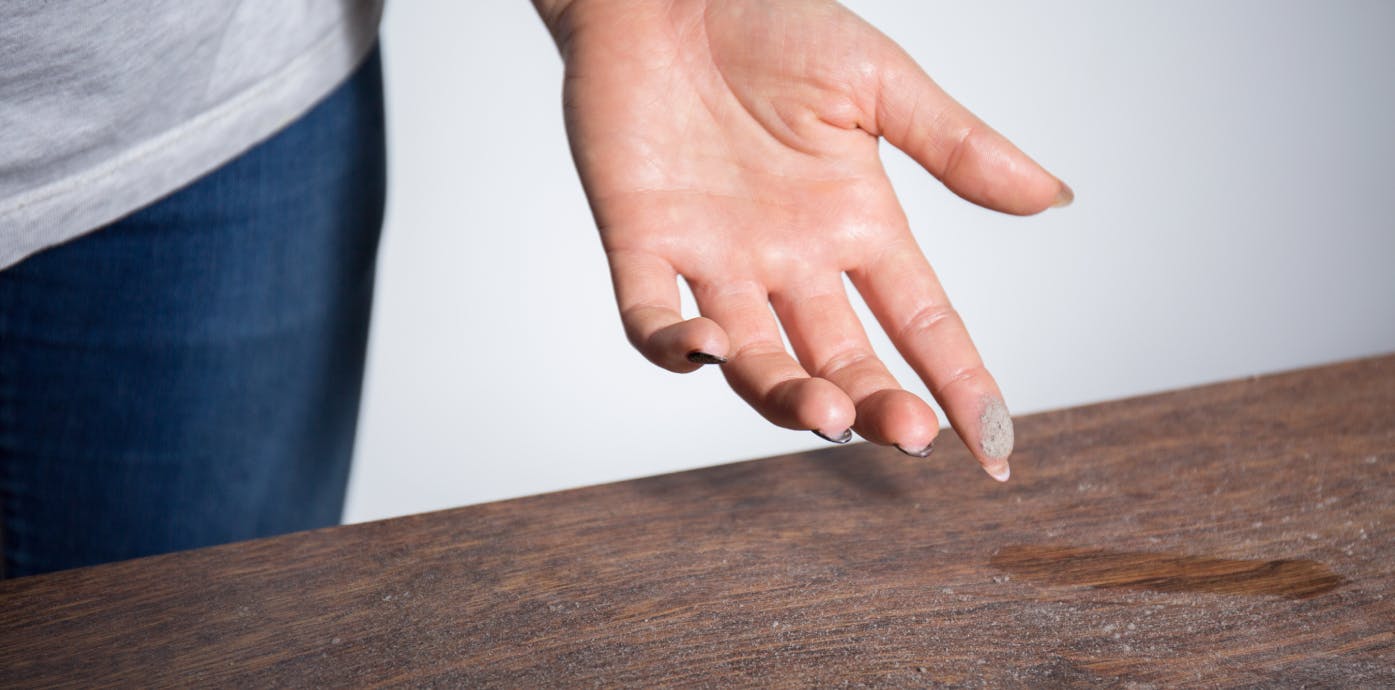
ALLERGY
TIPS
DUST MITE ALLERGIES

Dust mites are tiny organisms that are barely visible to the naked eye — but even though we often can’t see dust mites, many of us have these microscopic creatures living in our homes.

Dust mite allergies are extremely common, but the good news is that the symptoms of dust mite allergies can be treated. Learn more about the causes, symptoms and treatment options for dust mite allergies below.
DUST MITE ALLERGY CAUSES
Dust mites are very small creatures, measuring only ⅓ to ¼ of a millimetre. When viewed through a microscope, they appear as white, eight-legged bugs.
They live best in warm conditions of around 20°C to 25°C with humidity levels of 70 to 80 percent, making the average home a perfect spot for dust mites to thrive. Since they mostly feed off tiny flakes of human skin that we naturally shed each day, dust mites are often found in places in the home where dust containing skin flakes is more likely to be found – including mattresses, pillows, carpets and rugs.
It may surprise you to learn that dust mites themselves are not allergens – it’s their waste products, including their feces, which circulate in the air as part of household dust and trigger allergic reactions.
A dust mite can produce up to 200 times its body weight in waste throughout its life, and these waste particles can be easily stirred up into the air when someone vacuums, cleans, or moves the carpet or bedding where they have settled.
Just like any other type of allergy, such as pet dander or pollen, if you are allergic to dust mites, your immune system will react to these particles by releasing substances into your bloodstream to try and combat them. These substances then bring on allergy symptoms.
DUST MITE ALLERGY SYMPTOMS
An allergy to dust mites may produce a range of allergy symptoms, including:
- Sneezing
- Runny or stuffy nose (nasal congestion)
- Red or itchy, watery eyes
- Red, itchy rash or hives (rare)
Dust mite allergies may also cause bronchial asthma after chronic exposure to dust mites. Symptoms of bronchial asthma include a cough, wheezing or difficulty breathing.
Learn more about different common allergy symptoms.
DIAGNOSING DUST MITE ALLERGIES
If you think you may have a dust mite allergy, speak to your doctor so that they can properly diagnose the cause of your symptoms. They will use one of two common methods to determine whether or not you are allergic to dust mites:
- Skin prick test – this involves placing a drop of the potential allergen (dust mite particles) on the skin and scratching the spot with a needle. If the test site becomes red or swollen within 15 minutes, it indicates that you may have an allergy.
- Blood test – if you don’t want to or can’t have a skin prick test performed, you can instead have blood drawn and sent to a laboratory to be tested. The allergen will be added to your blood sample, and the amount of antibodies your blood produces to attack the allergen will be measured to test for an allergy.
A positive result from either test doesn’t necessarily mean that you have a dust mite allergy, but it can give your doctor more information to help them craft a diagnosis of your symptoms.
DUST MITE ALLERGY TREATMENT OPTIONS
If you do have a dust mite allergy, there are a number of simple ways that you can reduce the level of dust mite particles in your home. While it may not be possible to eliminate them completely, you can try these tips to help minimize the chance of a reaction, or to get some effective relief from your allergy symptoms:
- Get some over-the-counter allergy relief – allergies can make it difficult to get on with your day, but an OTC medication like FLONASE Allergy Relief can help give you some relief from even your worst allergy symptoms including nasal congestion, sinus pain and pressure, itchy nose and throat plus sneezing, runny nose and itchy, watery eyes.
- Use ‘mite-proof’ or ‘dust-proof’ covers – you can use these types of pillow and mattress cases to help minimize dust mite waste in your bedroom. Remember to wash your bedding and cushions regularly using hot water.
- Invest in the right air filter – use a high efficiency particulate air (HEPA) filter in your bedroom or other parts of the house to reduce dust mite particles.
- Keep the house clean – be sure to vacuum and clean regularly to avoid dust mite waste particles building up around your home. Ideally, someone in your household who is not allergic to dust mites should do the cleaning, to avoid a reaction to dust particles that are stirred up during the process.
- Reduce humidity – since dust mites thrive in humid environments, a dehumidifier can be a very effective tool in controlling them. Try to keep your home’s humidity level below 55%.
- Opt for wood flooring – when possible, reduce the amount of carpet used in your home.
